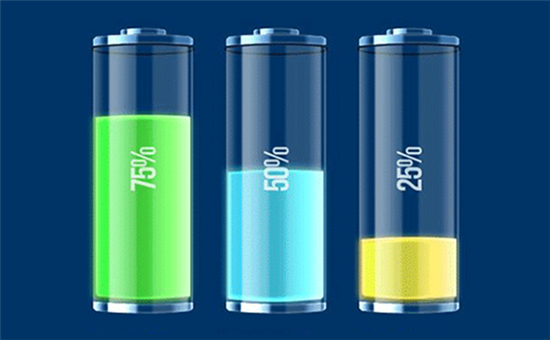Who Made Lithium-ion Batteries-Inventor,Created Time and Making?
May 19, 2020 Pageview:1365
The world is being converted into digital media. Except for human beings, all the others are being electronic, which works with batteries in it, either a remote, mobile phone, and many other pieces of equipment. Cells control there, and all these batteries consist of lithium batteries, which are also known as lithium-ion batteries. A lithium-ion battery or Li-ion battery are those batteries that can be recharged.
However, these batteries are commonly used for portable electronics and electrically chargeable vehicles, as these are the most growing and are the most popular andspecial applications. You should not be confused that these rechargeable batteries are vastly different from disposable batteries.
These batteries have a high energy density, which has a higher potential capability. The best feature of this battery is that it can be charged and used for a more extended period. That means they are relatively slow in discharge, and the self-discharge is less than half that of nickel-based batteries. If you are planning to use lithium polymer battery, then that can be a disadvantage for you as lithium-ion batteries are low in maintenance (no periodic discharge is needed, and there is no memory). The batteries are specialized cells that can provide extremely high current to applications such as power tools. So, they are some of the advantages of lithium-ion batteries.
No, we have many ideas about lithium-ion batteries, and these batteries are found in low-end phones.
Let us learn more about lithium-ion batteries:
Who developed lithium-ion batteries?
Batteries were originated during the critical situation of oil cruising during the 1970s, by Stanley Whittingham. He was an English chemist who was working in Exxon mobile during the time started and started exploring the idea of a new battery. He was the one to find those batteries that could recharge on its own in a shorter period and perhaps lead to fossil-free energy for a day.
His first attempt, Stanley Whittingham, tried using titanium disulfide and lithium metal as the electrodes, and these compositions posed several challenges, including serious safety concerns. The drawback was that batters were short-circuited and had caught fire, and that is when Exxon has decided to halt the experiment.
The 1980’s, an engineering professor at the University of Taxes at Austin John B. Goodenough had another idea. He started an experiment using lithium cobalt oxide as the cathode instead of titanium disulfide, which paid off, and then the battery had doubled its energy potential.
Years later, Akira Yoshino of Meijo University in Nagoya, Japan, had again swapped the component in it. He tried using reactive lithium metal as anode and tried using carbonaceous material, petroleum coke, which led to a revolutionary finding. The battery was not only significantly safer without lithium metal, and the performance was more stable, producing the prototype of the lithium-ion battery.
Is how a lithium-ion battery was established and came into existence.
When was the lithium-ion battery created?
Stanley Whittingham was the first one to develop lithium batteries in the 1970s, which were discovered by an energy-rich material called titanium desulphated that had space at the molecular level, and found an energy-rich article called titanium desulphated that had space at the molecular level to house lithium-ions. He was the one who created the battery in which the part of the anode was made of metallic lithium. The idea was great, but the battery created by Whittingham was unstable and had the tendency to explode after extended use.
Batteries were developed due to the oil crisis. Due to the result of the increasing price of gasoline shortages across the United States because of the spurred research into alternative energy and energy conversation. Whittingham had encouraged to research on superconductors.
A lot of practice and failure the lithium-ion batteries were developed by Akira Yoshino in 1985, which was based earlier by John Goodenough, Stanley Whittingham, Rachid Yazami, and Koichi Mizushima during the 1970s to 1980s. Commercially these prototype Li-ion battery was developed by a Sony and Asahi Kasei team led by Yoshio Nishi in 1991.
How is the lithium-ion battery made?
The battery was built with the help of Electron Microscopy and Spectroscopy.
The market for lithium batteries is growing at double-digit rates. The challenge is to develop cells faster and safer, long-lasting, and with higher energy density. To complete the research, many scientists are working together and turning various analytical techniques to study battery components at different stages of their lifecycle.
Many imagining techniques such as micro CT and electron microscopy, scientists can create a 2D and 3D image that would allow seeing the battery on a full-length scale, from the cell level down to the atomic level.
Study the evolution of materials structures and composition change as well as defect formations, and scientists then turn spectroscopy, such as Raman, NMR, X-ray diffraction, and mass spectrometry. These techniques are used to analyze the electrode materials as they charge and give information they would not otherwise see.
These batteries are created for safer use, more powerful, last longer, and perform even under severe weather conditions. They are some of the researchers who are trying to develop a battery under temperatures in the cold as -76° F, compared to the current limit of -4° For lithium-ion batteries.
The Final Verdict:
Lithium-ion batteries have revolutionized of modern-day living. So, with some sensible precautions, you can develop a lithium-ion battery.
The main thing is you should always keep it charged while using it. There are some of the disadvantages if these Lithium-ion batteries also. The cells require protection to circuit maintain voltage and current within safe limits. You should try to store the battery in a cool place where a 40% charge reduces the aging effect. The lithium-ion batteries are expensive to manufactures and are not fully matures. The metals and chemicals are changing continuously. So, the battery is useful for many electric vehicles and equipment.
Leave Message
Hottest Categories
-
Hottest Industry News
-
Latest Industry News











